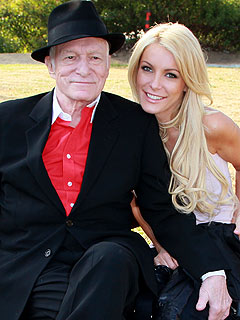BAMAKO, Mali — Soldiers carried out a late-night arrest of Mali’s prime minister at his home here, forcing his resignation early Tuesday and casting new doubt on plans to chase out radical Islamists who control much of this troubled West African nation.
Hours after being taken to the main army camp outside the capital for a dressing-down by military officers, Prime Minister Cheick Modibo Diarra, a former NASA astrophysicist, appeared grim-faced on national television to announce that he was resigning, along with all of his ministers.
Mali’s interim president, Dioncounda Traoré, named Django Sissoko as prime minister. Mr. Sissoko, who had been Mali’s ombudsman, will be tasked with forming a new government, according to a presidential decree read on state television.
A spokesman for the soldiers who seized power in Mali this year — and later nominally relinquished it to Mr. Diarra — accused him of “playing a personal agenda” while the country faced a crisis in the north, which fell to the Islamists after a military coup d’état in March. “There was a paralysis in the executive,” said the spokesman, Bakary Mariko.
But diplomats, human rights activists and analysts said the military’s arrest of Mr. Diarra on Monday merely confirmed that the army junta continued to hold power, despite the window-dressing of the civilian government, whose presence it resented. That reality, they said, complicates planned military aid meant to help the army reconquer northern Mali, an area that now alarms Western governments as a large-scale stronghold for Qaeda-linked jihadists.
“You don’t need to be an Einstein to know that this will slow everything down,” a Western diplomat here said Tuesday, speaking on the condition of anonymity. The planned assistance to Mali “just has to be on ice,” he said. Power has shifted entirely to the junta, the diplomat said.
The prime minister’s forced resignation was greeted in Paris and Berlin with expressions of dismay Tuesday, and new uncertainty surrounds a planned United Nations Security Council resolution authorizing force to retake the north.
France has been pushing for early intervention there, although the United States has expressed skepticism about plans by the regional grouping of West African states to retake the region and wariness about providing aid to the shaky civilian government — reservations likely to be reinforced by the latest developments.
In Washington, the State Department sharply criticized Mr. Diarra’s forced resignation. “We condemn this act by the military junta, and insist that it halt its continued interference in Malian political affairs and government,” Victoria Nuland, the State Department spokeswoman, told reporters on Tuesday.
With scorn for Mr. Diarra, the coup leader, Capt. Amadou Sanogo, said in an interview on state television Tuesday night, “Cheick Modibo Diarra has not given a thing, one single piece of equipment, to the Malian Army.”
Several soldiers and police officers guarded Mr. Diarra’s expansive villa at the edge of town here Tuesday. A request to see Mr. Diarra was turned down by soldiers, who said he was inside “resting.”
The prime minister’s fall from grace, via a military that had helped install him nine months ago, was as sudden as it was steep. He was appointed last spring as a caretaker prime minister until new elections, halted by the coup, could be organized.
Early Tuesday, after Mr. Diarra was hauled to the camp at Kati, outside the capital, Captain Sanogo, who led the coup in March, told him there was proof “against him that he was calling for subversion,” said Mr. Mariko, the military spokesman. “He had recorded cassettes that were going to be broadcast on ORTM,” the state broadcaster, Mr. Mariko said. “These cassettes called on the people of Mali to go into the street to oppose the army.”
But a more likely explanation was a growing and public clash about the best way of chasing the Islamists from the north.
Mr. Diarra, derided as an amateur politician by the well-entrenched political class here, has nonetheless been steadily raising his profile at the expense of Captain Sanogo. He has made the rounds of foreign capitals to push his view that reconquering the north required immediate international military assistance. Captain Sanogo has rebuffed suggestions that the Malian Army is incapable of handling the job on its own. Indeed, for weeks, the captain resisted the idea that troops from other African nations should even go near the capital.
Despite this, the Malian Army, defeated by Islamists and nomadic rebels last winter and spring, has been deemed seriously deficient by United Nations and Western military officials.
Captain Sanogo, trained in the United States, has depicted himself as a national savior, even comparing himself to Gen. Charles de Gaulle in an op-ed article in Le Monde several months ago. Meanwhile, Human Rights Watch has implicated him in serious violations involving rival soldiers who tried to roll back the coup in April.
The conflict between the two men was evident in the declarations of the military’s spokesman Tuesday. “Since he has been in power, he has been working simply to position his own family,” Mr. Mariko said.











